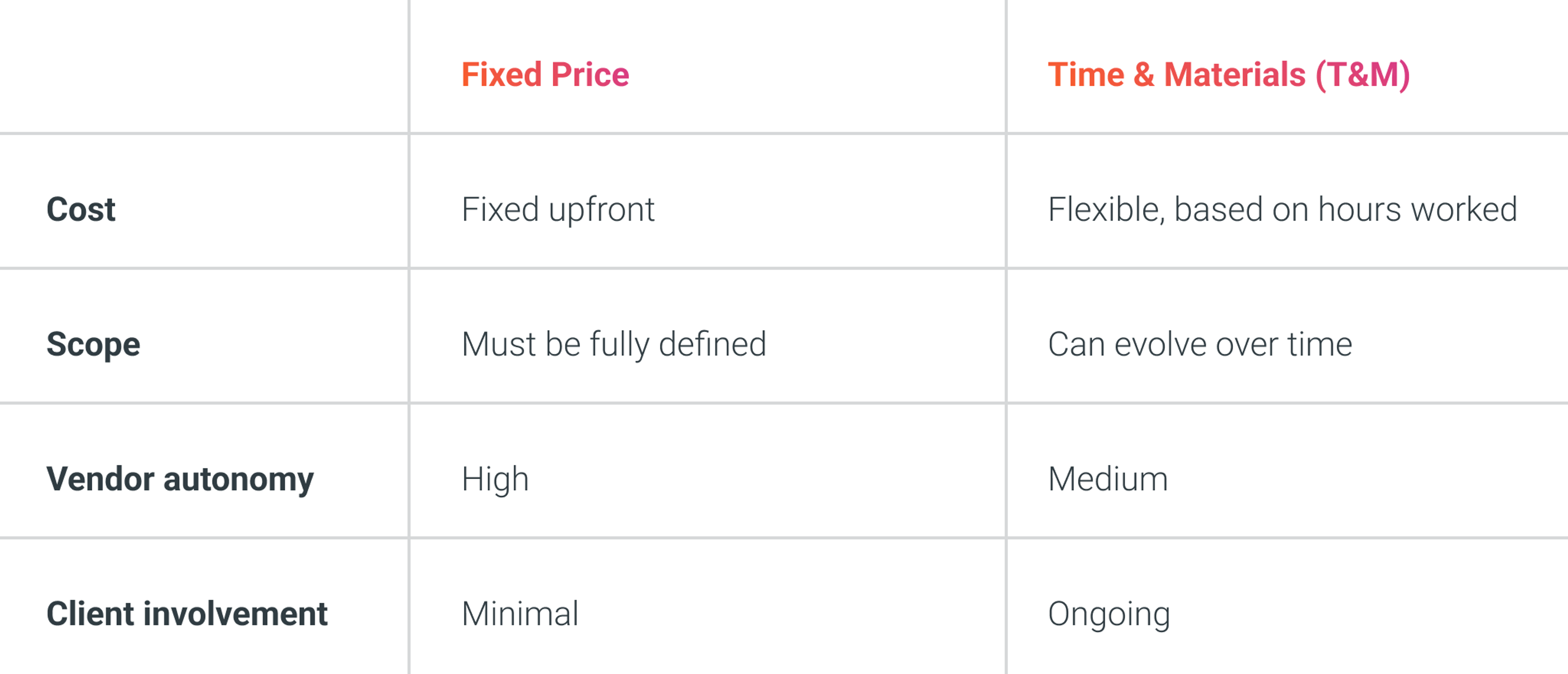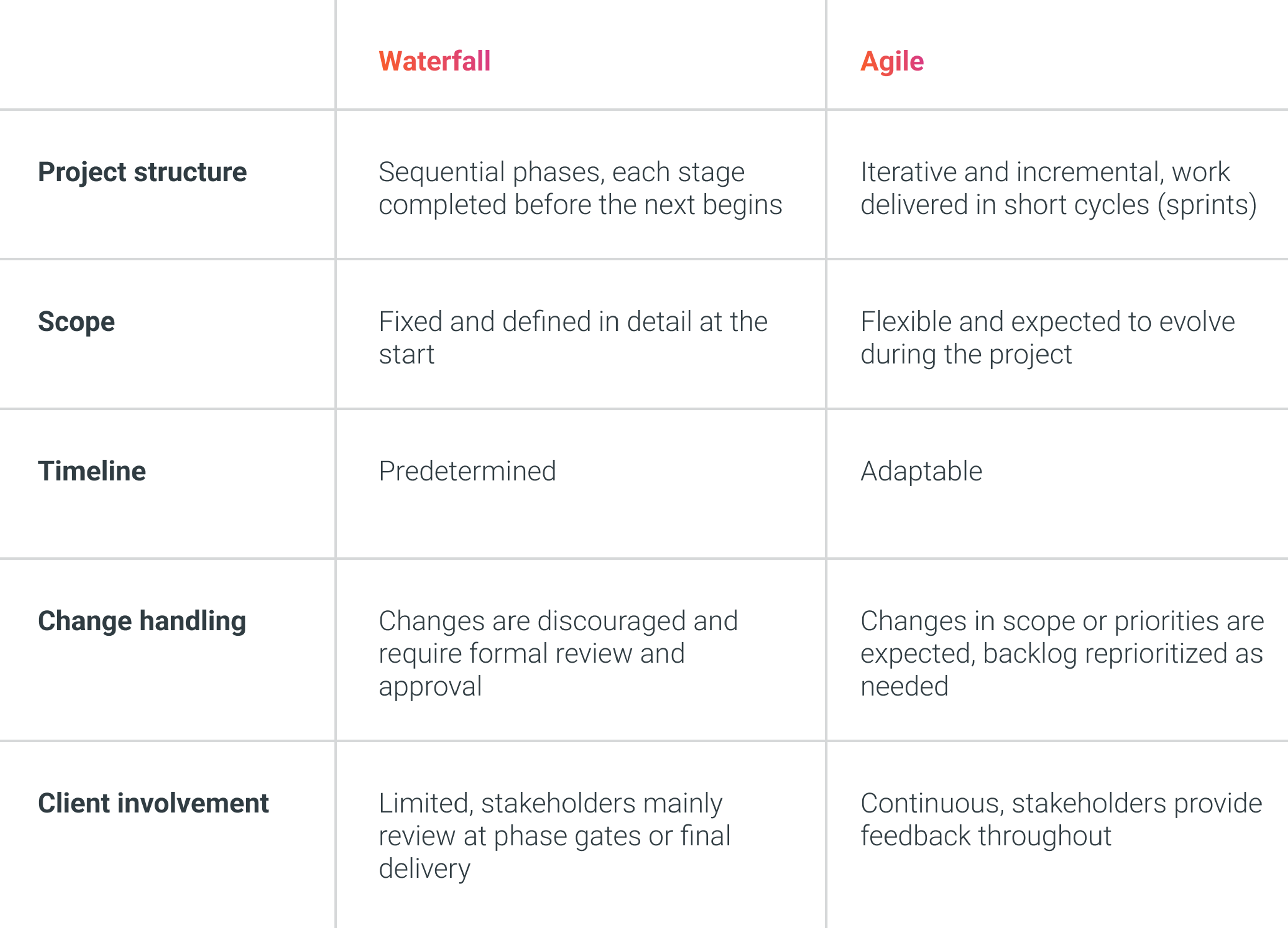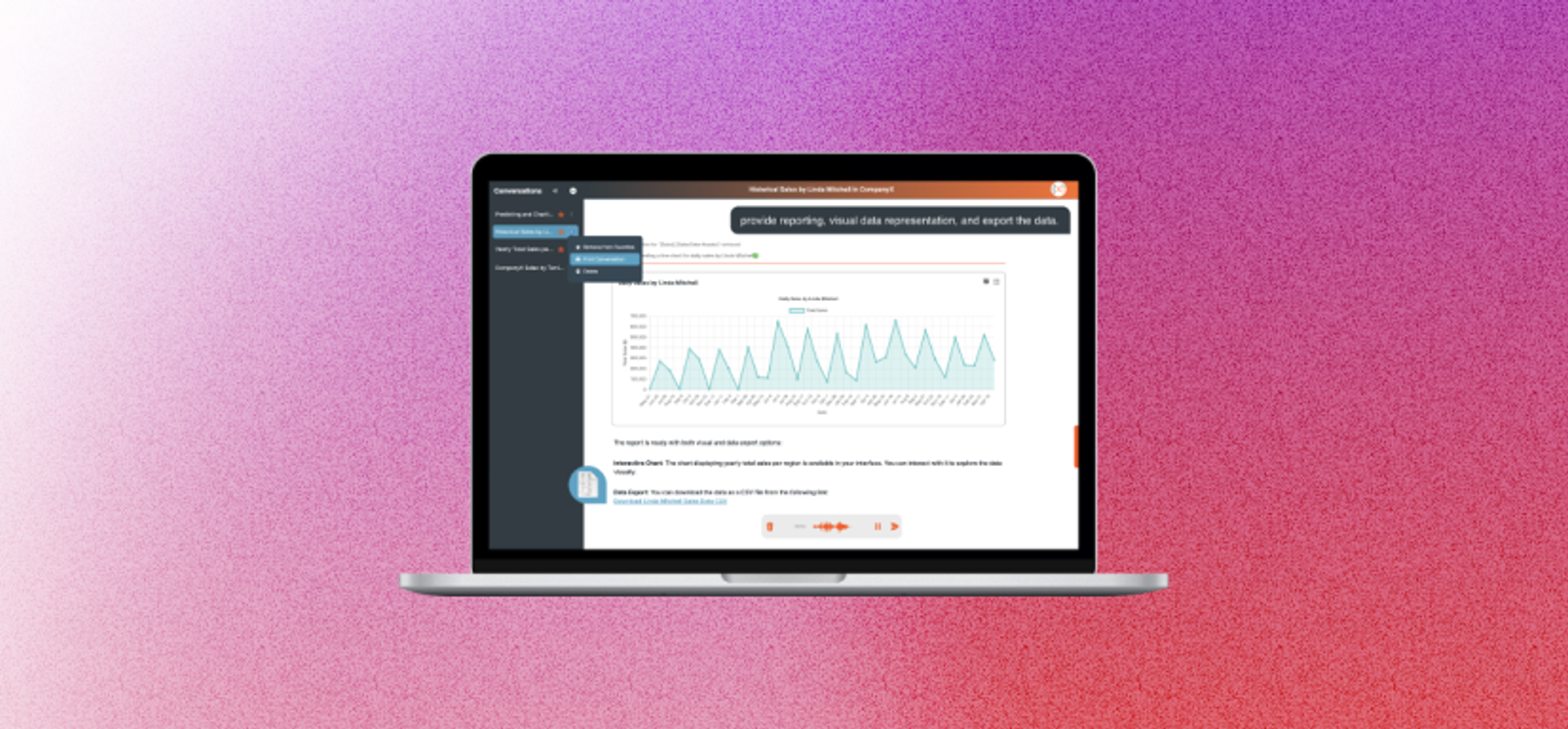

Diego Santillan
Co-Founder & COO
Fixed price is an engagement model where you and your technology partner agree up-front on building a software solution with a well-defined scope for a set price. The provider commits to delivering specific outcomes for a fixed budget, regardless of the actual effort required. Both sides also agree on a set of fixed assumptions: conditions, constraints, and dependencies that are agreed upon and accepted as true, which shape the scope, estimates, and pricing.
Think of fixed price like booking an all-inclusive vacation: you pay one price, get a defined set of deliverables, and expect no surprises. This model works beautifully when the destination and experience are predictable, but if you're backpacking through five countries, building your itinerary on the go, all-inclusive doesn’t make sense. Similarly, fixed price software only works if you know exactly what you want, want everything taken care of, and don’t plan to change your mind mid-project. Some changes are possible after kickoff, but they can be difficult and often expensive.
These are the key features of fixed price software:

To determine if fixed price is right for your project, it’s important to compare it to Time & Materials (T&M), another common engagement model. While both have their merits, they differ significantly in how they handle scope, cost, autonomy, and collaboration.
In a fixed price engagement, most variables are defined upfront. In T&M, costs are based on hours worked, and scope can evolve over time. T&M offers adaptability, making it ideal for projects where requirements may change or aren’t fully defined from the start.

My short answer: almost never. I’ve seen many teams try to merge Agile methods with fixed price engagements, and in my experience, it’s rarely a recipe for success. There are rare cases where a blend of fixed price and Agile (or other productivity-based models) works, but at scale, it generally doesn’t. The reason is simple: fixed price assumes a fixed scope, while Agile is designed for continuous iteration and evolving priorities. The combination of them frequently leads to misaligned expectations: the client expects flexibility, while the vendor expects stability, leading to frustration on both sides and therefore tension in the relationship.
In my experience, Waterfall is the methodology with the highest success rate for fixed price engagements. It's more rigid and limits change, but it helps both parties ensure the project stays within predefined parameters.

A fixed price contract provides budget certainty, but it doesn’t eliminate all project risk. Unexpected challenges can arise if the initial requirements or assumptions are incomplete or misunderstood. In order to mitigate this, I usually advise clients to rigorously gather requirements and document them prior to project initiation. This strategic approach is proven to increase the likelihood of project success, because it reduces ambiguity and ensures all stakeholders are aligned before starting development.
A frequent misconception is that minor changes can be incorporated at no additional cost. In reality, any work outside the agreed scope is subject to formal change management and may incur additional costs. Fixed price is most effective when both parties maintain transparency and discipline around scope definition.
Fixed price is inherently more costly than T&M, as it often includes a risk buffer to account for estimation uncertainties and contractual obligations. However, this doesn’t necessarily make it cost-prohibitive. In fact, for well-defined projects, a fixed price model can be a highly strategic investment, offering a compelling balance of risk management and value, which often outperforms T&M in terms of long-term business outcomes.
Understanding the realities of a fixed price engagement is essential for making an informed decision. In my next article on fixed price, I’ll explore when it truly delivers value and I’ll provide my playbook for successful project execution. If you’re weighing your options or have questions about how fixed price could work for your particular case, don’t miss this practical guide to fixed price software success.

Insights
A clear, practical guide to deciding if fixed price software is the right fit for your needs. You’ll find real-world examples, a proven playbook for fixed…

Insights
CloudX announced today that more than 300 of its employees worldwide are now AI-certified, making it the first company to achieve full AI accreditation across…

Enterprise AI Solution
A versatile, extensible, and customizable AI Agent designed to transform the way you interact with your business data.